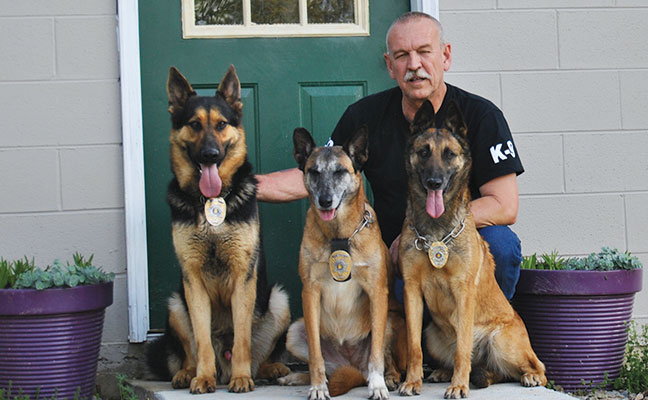
Reputable dog trainers, such as David Latimer — who has a blog series on PMPPestTalk.net — can help pest management firms overcome any trouble spots they may encounter in the field. PHOTO: David Latimer
Using canines in pest control has become popular in recent years, especially for bed bug detection. While it can have its merits (including a lot of positive marketing for the dog-loving public), it has its detriments, too. Here are eight potential pitfalls you should keep in mind if you are using or plan to use a canine program:
1. Some dogs on some days register false positives. In the past decade or so, we have learned that simple things like duct tape around cages of live bed bugs used to test the dogs can result in the dogs responding to the duct tape. The problem is, you do not know which dogs on which days register false positives. To overcome this situation, do not treat with any pesticide unless you can find active live bed bugs. This keeps you from treating when no treatment is necessary.
2. Some dogs on some days register false negatives. Any dog is bound to miss live bed bugs on occasion. Another frequent problem occurs when the dog handler misses the positive sign that the dog gave.
3. Some dogs do better in (uniformly laid out) apartments than in individual houses or offices. Select a dog that is trained for the type of account you are going to inspect.
4. Strong smells emitting from a kitchen or cleaning agent can throw a dog off. To combat this, tell the customer ahead of time not to cook — or wash with strongly scented detergent — on the day the dog is going to work on the premises.
5. In a few cases, people may be allergic to dog hair. Others may find the presence of a dog in their facility offensive. Check ahead for both situations, and never assume.
6. Be prepared to invest the time and labor a working dog requires. The reputable companies that train and sell bed bug detection canines have fine-tuned a quality assurance program that basically mandates the dogs must be recertified almost daily by the handler in the field. It’s why many pest management firms just rent a dog when they need one, rather than keeping one on staff.
7. Choose your handlers wisely. Sometimes, handlers become so attached to the dogs that they become less responsive to the company needs and/or they threaten to leave. Be extremely careful whom you select to work with the dog.
8. Are you ready to commit? Having a canine on staff takes money, marketing and even housing commitments — who will keep the dog on weekends? It is a 24/7 job, and must be done by sincere individuals who feel good about the entire process.
Speedy, loyal canines
At this point, you probably feel that I am opposed to the use of bed bug detection dogs. Not so. Let me tell you why:
⦁ Properly trained dogs can work more quickly and spot more bed bug locations than any human.
⦁ In commercial accounts, such as 1,000 school buses or 100,000 sq. ft. of office floor space, nothing we have today can work as quickly and effectively.
However, as new technology in the development of mechanical devices for bed bugs improves, the need for bed bug detection dogs will become diminished. We already have a few different traps that use attractants and utilize special cameras to photograph and verify what you catch. This data can be relayed to several cell phones simultaneously, and alert you when any activity is noted.
The importance of bed bug management in the pest control industry continues to hold its own. We are getting a better understanding of how to achieve successful control and maintain a proactive pest management program. And for now, bed bug canines continue to be loyal foot soldiers in this ongoing battle.
Leave A Comment